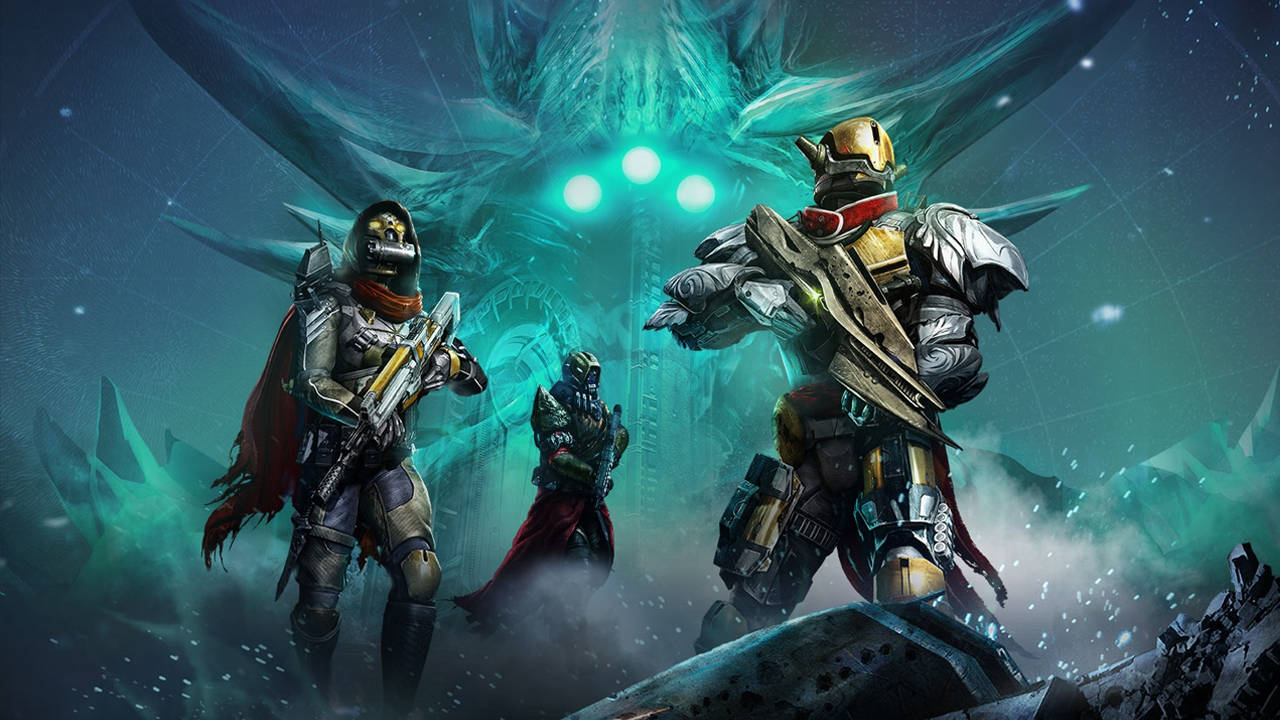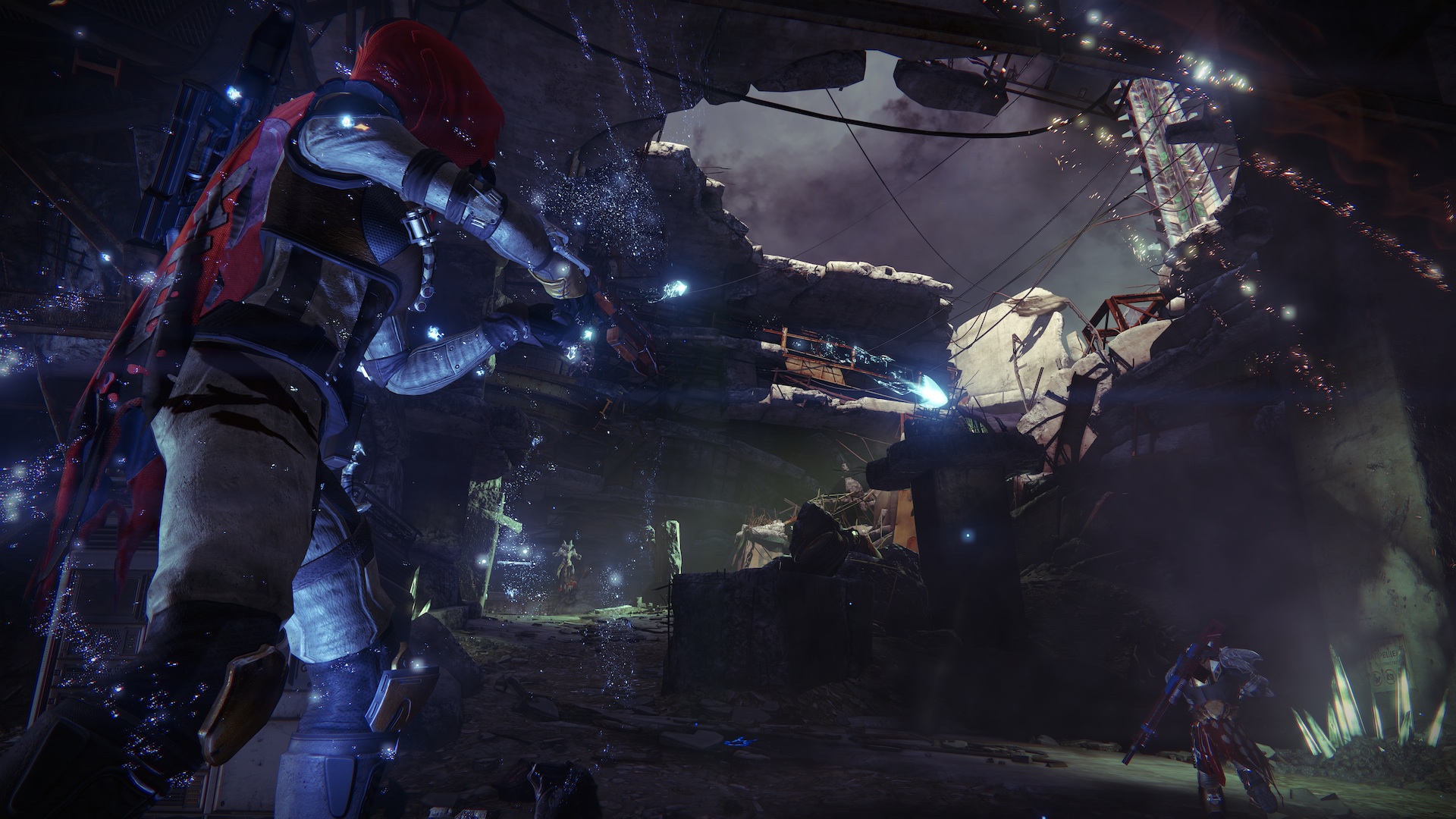Why Destinys raids need a break
I breathed a sigh of relief when I finally won the Crux of Crota. It's an exotic material that only drops from Destiny's hardest raid boss, Crota, on the hardest setting. Getting one allows you to transform a dreadful Hive-themed auto rifle, the Eidolon Ally, into the Necrochasm, a rarer dreadful Hive-themed auto rifle.

I wasn't glad because I seriously believed I'd ever actually use the Necrochasm. It will take a serious buff, both to the gun itself and auto rifles in general, for me to consider that. No. I was glad because the Crux was the last thing I needed from hard mode Crota's End. I breathed a sigh of relief because I no longer 'had' to raid at this level.
That 'had' is subjective, of course. Nothing in Destiny's endgame is mandatory. But I'm a completionist and a packrat and I wanted all of the exotic gear and raid-exclusive legendaries. I raided extensively to get them, relying on groups of strangers sourced through the friendly Destiny community. I learned to play the swordbearer role during the Crota fight, one of gaming's most fraught co-op challenges: charging towards the boss, knowing that a single slip-up, a single mis-timed blink strike, a single glitch in Crota's erratic AI could mean a reset with all of the blame directed squarely at me.
I did it, I got all of the legendary primary weapons, I got the Crux of Crota, and I got out. Because as much as I love this game and value the raiding experience, I'd seen that final encounter enough times. I've gone back to my raiding sweet spot, which is hard mode Vault of Glass and normal Crota's End once a week. I've 'retired', awaiting the next journey.

A lot of longtime Destiny players are in this position, I think, and I understand why many of them are upset about the lack of a raid in House of Wolves. When you've worked this hard to get good at the game's most extreme mode of play, getting something new to tackle feels like an urgent priority - the only way to respect that investment and take it to the next level. Certainly, there are players whose mastery deserves to be demonstrated on the toughest combat puzzles Bungie can create. Those who can raid one-handed, for example, or with a blindfolded fireteam.
Having taken a step back, however, I completely understand Bungie's decision. It's pretty simple: Crota's End is broken in many key ways. Worse, Crota's End exposes problems with Destiny's fundamental systems that demand a proper rethink. If solutions weren't forthcoming in time for House of Wolves, the decision to bench raids for the time being seems like an unavoidable one.
Consider Vault of Glass. It's still the highlight of Destiny as a whole, for me, and representative of what a raid should be. It works because it offers two divergent experiences. The first time you play, particularly if you go in blind, it's a perilous journey. Every room requires you to learn something new, and these patterns are rooted in consistent environmental clues. Those clues are tuned to tell you something about the Vault itself even as you're figuring out the steps that will lead you to the next loot drop. The music of the Oracles; the mysterious provenance of the Aegis shield; the unique weapon deployed by the Gorgons. These things are there to both create a mood and prime you for the challenge, culminating in the brilliant reveal (remember when it was a 'reveal'?) of the time travel element during the final encounter.
Weekly digests, tales from the communities you love, and more

Now that Bungie have ironed out the worst exploits, the Vault of Glass stands up to repeat play. Even when your entire team knows it backwards, the challenge itself is still interesting. Even killing the Oracles from safety at the top of the Templar's Well feels semi-legitimate: it's still possible to screw up, after all. And more importantly, the Vault as a whole has retained some of its mystery. Check out Destiny's dedicated secret-hunting subreddit, /r/raidsecrets - ostensibly devoted to both raids, yet completely dominated by Vault of Glass.
And so to Crota's End. On paper, it really does work as a successor to Vault of Glass. Here you have another journey - first deep into the moon, then to another dimension entirely - with complex co-op challenges to crack along the way. Bungie's fondness for asymmetrical encounter design gets flipped on its head as shieldbearers become swordbearers. Yet it doesn't quite work. The way that the Vault of the Glass marries narrative and play is largely absent. As the community digs deep to crack the mysteries of the Templar's Well, nobody is asking those questions about the Crota's End bridge encounter. It's a cool design - Tower of Hanoi with guns and space zombies - but it doesn't evoke anything more than that.

Plus, crucially, it's never really worked properly. Crota's End feels like the moment when Bungie bumped right up against the limits of what their current encounter design methodology could achieve, just as the community figured out just how much they could feasibly break. Nobody I know crosses the bridge legitimately any more, because it is so straightforward to bypass in multiple ways. These methods are based on knowledge of Destiny's underlying scripting, particularly the way invisible bounding boxes are used to let the game know which players are where, and what state they're in. Bungie gave players all the tools they needed to manipulate those scripts, from the Sunsinger's self-revive to the vertical manoeuvrability of the Titan.
If I worked at Bungie, I'd be deeply unhappy about this. Players having the freedom to experiment is a great thing, and should be safeguarded by design - but players accepting broken systems as normal isn't. Players teaching each other that the only way to progress is to exploit loopholes is an ugly and unsustainable status quo for any game to land in. Come at it with fresh eyes, and the whole thing looks absurd: this is what Destiny's endgame looks like? Every week, six people come together to avoid engaging with the game?
I don't think the answer here is simply 'design a better raid'. Crota's End exposes the way that Bungie's creativity can be stymied by the way the game as a whole functions. Creating a new raid, then, is a technical problem as well as a creative one - the inner workings of the game need to change if players are to be provided with something that mirrors Vault of Glass' lasting appeal and sense of strange. The only alternative is deeply unsatisfactory: to strip away any room for creative freedom on the part of the player by designing encounters with a single solution. This is more or less what happened with hard mode Crota's End. Like an overbearing pen-and-paper dungeon master, Bungie piled on arbitrary rules ('Crota always enrages after fifteen hits', 'a wizard spawns if you kill the boomer knights') to forcibly corral players out of their comfort zone. It's still fun and rewarding, to a degree, but the improvisational flair of the hard mode Vault of Glass finale is completely gone - and with it, the thing that elevated Vault from 'fun and rewarding' to 'special and enduring.'

In this light, the current course of the game looks like the right one. The Prison of Elders is designed to be repeatable, reliable, and varied in ways that the developers directly control - through modifiers and subtly randomised encounter sets that have been proved, through the weekly Nightfall system, to work. It's a pragmatic alternative to raids, which represent the most ambitious thing that Bungie have tried to do with Destiny.
I value that ambition, of course. I expect to see it come thundering back in the autumn. But if Bungie couldn't iron out the problems inherent to the raid system in time for House of Wolves, the decision to delay was the right one. Providing no raid risks cooling the community's enthusiasm for complex co-op; providing another broken raid risks destroying that enthusiasm entirely.



